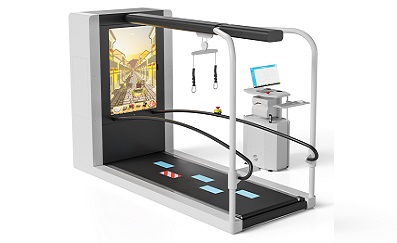C-Mill used in first study to assess Parkinson’s Disease obstacle avoidance
News
The C-Mill treadmill has been used in the first study to assess how Parkinson’s Disease affects the capacity for obstacle avoidance as a function of the available time to respond.
Parkinson’s Disease is a neurodegenerative disease that leads to a progressive decline in motor function, including symptoms of rigidity, tremor, bradykinesia, postural instability and gait disorder. One debilitating consequence of postural instability and gait disorders is increased fall risk. Over 60% of people with Parkinson’s Disease reported at least one fall, and 70% of these people experienced two falls within a year. The prevalence of falls also significantly increases with disease progression.
Falls often occur due to spontaneous loss of balance, but tripping over an obstacle during gait is also a frequent cause of falls. Obstacle avoidance required that appropriate modifications of the ongoing cyclical movement be initiated and completed in time. The study evaluated the available response time to avoid a virtual obstacle in 26 Parkinson’s Disease patients (in the off-medication state) and 26 control patients.
The C-Mill allowed for virtual obstacle avoidance tasks during visually cued treadmill walking using augmented reality and virtual reality. The C-Mill’s integrated body weight support system and safety harness allowed for these tasks to be performed in a safe environment. Read more.
To maintain a stable baseline of stride length and visual attention, participants stepped on virtual “stepping stones” projected onto the treadmill belt. Treadmill speed and stepping stone spacing were matched to overground walking (speed and stride length) for each individual. Unpredictably, a stepping stone changed colour, indicating it was an obstacle to be avoided. Participants were instructed to try to step short to avoid the obstacle. By using an obstacle that appeared at a precise instant, this task probed the time interval required for processing new information and implementing gait cycle modifications.
The results of this study show that the probability of successfully avoiding an unexpected obstacle depended strongly on the available time to respond, in both the control patients and the patients with Parkinson’s Disease.
Additionally, the study found that Parkinson’s Disease participants required more time than the control participants to achieve an equivalent probability of avoiding the obstacle.

